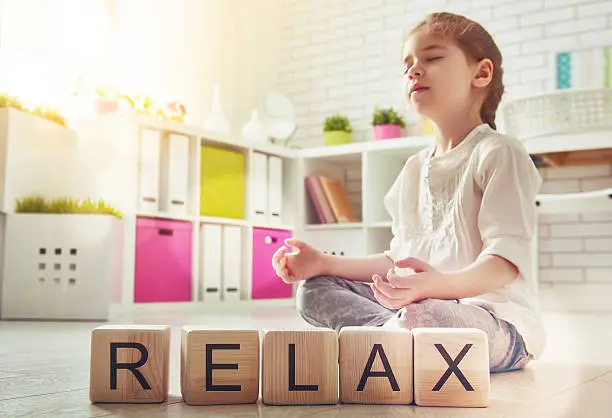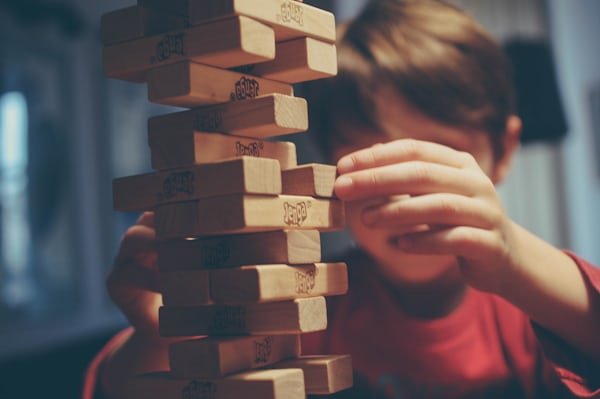Have you ever looked at your child and just knew their little world felt a bit too big that day? Maybe it was the slammed door after school, the frustration over a tricky homework problem, or the tears that came out of nowhere. Our kids are navigating a world that’s noisy, fast, and demanding, and sometimes, their circuits get overloaded.
As parents, our first instinct is to fix it. But what if, instead of just fixing the problem of the moment, we could give them a tool they could use for the rest of their lives? A kind of secret superpower to find their own calm, understand their big feelings, and focus their busy minds.
That’s what mindfulness is. It’s not about sitting in silent meditation for an hour (can you imagine?!). It’s about weaving small, playful moments of awareness into your day. It’s a game-changer. And I want to share some of the simple games and activities that have genuinely helped in our house, and I know they can help in yours, too.

Table of Contents
The Real-Life Superpowers Mindfulness Gives Our Kids
When we play these simple games, we’re doing more than just passing the time. We’re helping our kids build real-life skills that will support them for years to come.
- They learn to ride the wave of big emotions. Instead of a tantrum over a broken toy becoming the whole afternoon, they start to build the skills to notice “I feel angry” without letting that anger take over completely. It’s the difference between being sad and feeling sad.
- Their focus gets a boost. In a world of endless distractions, learning to place your attention on one thing—like the feeling of your breath or the taste of a strawberry—is a superpower for the classroom and beyond.
- They become friends with themselves. Mindfulness helps kids get to know their own inner worlds. They start to understand what makes them tick, what makes them happy, and what makes them anxious, which is a huge step toward building confidence.
- Bedtime becomes a little bit easier. A calm mind leads to a relaxed body. These quiet activities are perfect for a pre-sleep routine to help settle a busy brain and drift off to sleep.
- They grow bigger hearts. When a child understands their own feelings, it’s so much easier for them to understand that others have big feelings, too. This is where real empathy and kindness begin.
Let’s Play! 5 Fun Mindfulness Games for a Calmer, Happier Kid
Here are five of our favorites. Remember, the goal is connection and play, not perfection!
Game #1: The Breathing Buddy Sleepover
This is the perfect place to start, especially with younger kids. It makes the abstract idea of “breathing” something they can see and feel.
- How to Play:
- Invite your child to lie down somewhere comfy, like on their bed or a soft rug.
- Ask them to pick a favorite “Breathing Buddy”—a small stuffed animal or a lightweight toy works perfectly.
- Have them place the buddy on their belly.
- Now, the fun part! Tell them their job is to gently rock their buddy to sleep using only their breath. As they breathe in, their belly fills with air and the buddy rises. As they breathe out, their belly gets smaller and the buddy goes down.
- You can whisper something like, “Look! You’re giving Teddy a gentle ride.” Keep it going for a minute or two.
- Why We Love It: It’s a sweet, visual way to connect with the calming power of a deep breath. In our house, the Breathing Buddy often gets a little kiss before the ride begins!
Game #2: The Five Senses Detective
This game is amazing because you can play it literally anywhere—in the backyard, waiting in line at the grocery store, or on a walk. It pulls your child out of their head and into the world right in front of them.
- How to Play:
- Announce, “Okay, we’re going to be Five Senses Detectives! Our mission is to find…”
- 5 things you can SEE: “Look for something blue! Now find something with a zig-zag pattern.”
- 4 things you can FEEL: “Can you touch something rough? Now find something soft.” (Think tree bark, a soft leaf, the cool metal of a railing).
- 3 things you can HEAR: “Let’s close our eyes for ten seconds. What sounds can we hear? A bird? The wind?”
- 2 things you can SMELL: “What does the air smell like? Can you smell the rain coming, or maybe the flowers?”
- 1 thing you can TASTE: “What does the inside of your mouth taste like right now?”
- Announce, “Okay, we’re going to be Five Senses Detectives! Our mission is to find…”
- Why We Love It: It’s a fantastic “reset button” for a scattered or anxious mind. It instantly grounds them in the present moment in a really fun, engaging way.
Game #3: The Super-Powered Snack
This turns a regular snack time into a delightful adventure. It’s amazing what kids notice when we give them the space to slow down.
- How to Play:
- Choose a simple snack, like a strawberry, a few blueberries, or a pretzel.
- Give them one piece and tell them they are a “Food Scientist” about to study a new discovery.
- First, they investigate with their eyes. “What colors and shapes do you see?”
- Next, investigate with their nose. “What does it smell like?”
- Then, put it in their mouth without chewing. “What does it feel like on your tongue?”
- Finally, invite them to take one, super-slow bite. “What happens to the flavor? Is it sweet? Salty?”
- Why We Love It: It’s a playful rebellion against our fast-paced, mindless way of eating and helps cultivate a real sense of gratitude and enjoyment for food.
Game #4: What’s That Sound?
This is a wonderful quiet-time game that sharpens listening skills like nothing else.
- How to Play:
- Find a comfy spot and maybe ring a little bell or chime, saying, “The Listening Game is starting!”
- Ask your child to close their eyes and listen like they have super-sonic ears, trying to catch as many different sounds as possible until the bell rings again (a minute is a great start).
- When the game is over, take turns sharing all the sounds you heard. “I heard a car, a dog barking far away, and the humming of the fridge!” You’ll be amazed at what their little ears pick up.
- Why We Love It: It teaches kids that silence isn’t empty—it’s full of interesting things! It’s also incredibly calming for a hyperactive system.
Game #5: The Slow-Motion Zoo
This one is perfect for getting the wiggles out in a mindful, intentional way.
- How to Play:
- Instead of just acting like animals, you’re going to move like them in super slow motion.
- You could be a slow-motion bear, feeling the weight in your hands and feet with each heavy step.
- Or a lazy snake, feeling every part of your belly on the floor as you slither.
- Or a tall giraffe, stretching your neck as slowly as you can to reach a leaf.
- Ask them, “What does it feel like in your legs when you stomp like a slow elephant?”
- Why We Love It: It connects mind and body, helping kids become more aware of how their bodies feel and move through space. It’s fantastic for kids who have a hard time sitting still.

My Golden Rules for Making Mindfulness Stick
- Keep it short! Seriously, even just two minutes is a huge win, especially when you’re starting out. The goal is a positive experience, not an endurance test.
- Make it feel like play, not a chore. Use a playful voice, be silly, and get down on the floor with them. Your energy is contagious.
- They see what we do, not just what we say. The most powerful thing you can do is practice with them. Let them see you taking a deep breath when you feel stressed. That’s a lesson they’ll never forget.
- Let go of “perfect.” Some days they’ll love it, and other days they’ll be too wiggly, and that is completely okay. Never force it. Just offer the invitation. Tomorrow is a new day.
A Gift for Life
Giving our children these simple tools is one of the greatest gifts we can offer them. We’re not just helping them find calm in a single tough moment; we’re planting the seeds for a more resilient, self-aware, and—as research shows—a more compassionate person. We’re showing them that no matter how loud the world gets, they can always find a quiet place inside themselves.
I’d genuinely love to hear from you. Which of these games are you excited to try first? Pop your thoughts in the comments below – sharing our stories and ideas helps us all on this wild and wonderful parenting journey!